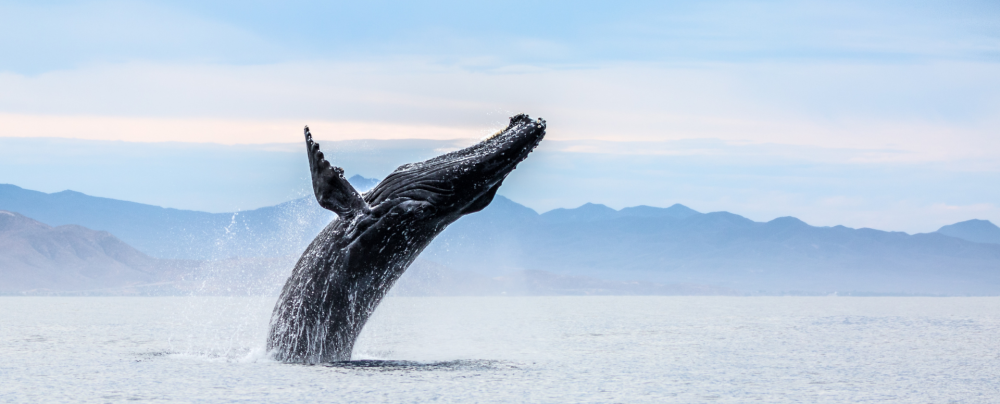Are you feeling the call to migrate to warmer temperatures over the dark and cold winter months? You aren’t the only one!
One of the greatest animal migrations on earth has already begun.
Where do BC’s whales go in the winter?
The warmth of summer has faded, autumn only lasted a fleeting moment and somehow we have already returned to the season of limited daylight, frigid temperatures and the urge to hibernate. For those of us living along the BC coast, we get to look forward to epic winter storm-watching and a truly impressive amount of precipitation while our neighbours in the watery world are migrating towards sunnier horizons.
So, where exactly do they go? Let’s dive in.
GREY WHALES
Most grey whales in the north Pacific spend their summer feeding in the shallow nutrient-rich waters between Alaska and Russia. However, a distinct group known as the Pacific Coast Feeding Group (PCFG) are found in the more temperate waters ranging from southeastern Alaska to northern California, including the entire BC coast.
Following the coastline of North America, these gentle giants return each year in staggering numbers to the sunshine of Baja California! This population typically begins their southerly migration in October through December, arriving in Baja around late December or early January. By February and March, the nursing lagoon in Magdalena Bay is at its fullest with many mother and calf pairs present.
Learn more about the significance of Bahia Magdalena here.
HUMPBACK WHALES
The North Pacific humpback whale population spends most of April-October off the coasts of British Columbia and Alaska. These northern nutrient-rich feeding grounds provide an abundance of food, mainly in the form of small schooling fish like Pacific herring, as well as krill and other crustaceans.
Up to 1/3 of BC’s humpback population migrate down to Baja, Mexico while the remainder instead head to the Hawaiian Islands. Spread throughout the Mexican coastline, humpbacks can be seen in Magdalena Bay, Los Cabos, the Sea of Cortez, Puerto Vallarta and Banderas Bay throughout the winter months.
Once in these southern waters where prey availability is sparse, something extraordinary occurs: humpbacks stop eating entirely. They instead rely solely on thick layers of blubber they accumulated during the summer months. For females especially, this energy demand is intense as pregnancy, birthing, and nursing all occur throughout this time.
Learn more about Mexico’s humpback hotspots here.
ORCA (Killer WHales)
Despite being able to swim vast distances, killer whales are not known to migrate seasonally. Orcas can be seen year-round in BC with feeding, mating and birth all occurring in our local waters! Even though they aren’t straying far, their ranges do shift seasonally and vary between ecotypes.
Bigg’s / Transient (marine mammal eaters) are known to hang out throughout the Salish Sea year-round and can reliably be seen feasting on the influx of sea lions during the winter herring spawn.
Northern Residents (salmon eaters) instead spread out along the central and north coasts towards Alaska— although the A5’s consistently make an appearance much further south in Howe Sound, which is an important feeding area during the winter months.
The Salish Sea and Juan de Fuca Strait remain a core foraging area for the critically-endangered Southern Residents (salmon eaters), most notably for J pod. They are also known to follow winter salmon runs offshore along the Washington coast and northern Oregon.
Learn more about OceanWise’s annual winter research project and the role eDNA plays here.
Ready to embark on a warm water migration of your own? Follow the whales! Dive into our newest Baja, Mexico tours to browse details, itinerary highlights, travel tips and more.
